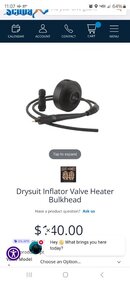OP
RedSeaDiver2
Contributor
It sounds like we really need to look further into the ways of preventing the carbon pads from creasing to make sure that this doesn't cause issues.Its surprisingly hard to feel when a pad or hotspot is "too hot" and many folks have been burnt by heater in the past. Usually from a broken nichrome wire or creased carbon fiber pad. That will create a spot of high resistance and excess heat over a tiny area. So that's a warning...
Otherwise keeping to 40-45C maximum would be wise.
I might set the maximum to 40 degC





